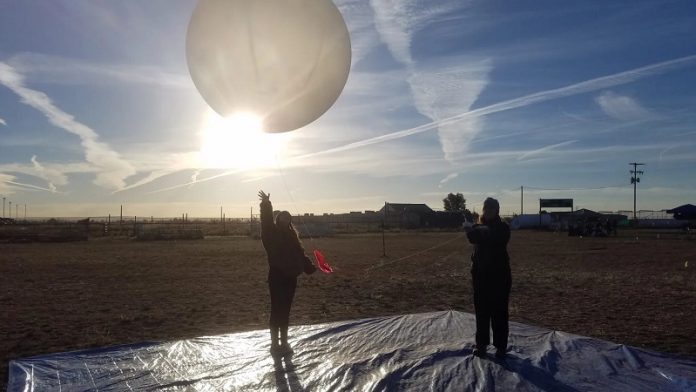
A groundbreaking discovery has just been made by student teams from three U.S. universities: eclipses can create ripples in Earth’s atmosphere, known as atmospheric gravity waves.
This phenomenon, which scientists have long predicted but never confirmed, was observed during the North American annular solar eclipse on October 14, 2023.
The students were part of NASA’s Nationwide Eclipse Ballooning Project (NEBP), which allowed them to capture data that clearly showed these atmospheric waves.
The NEBP involved high school and university student teams stationed along the path of the eclipse across multiple U.S. states.
Their task was to launch weather balloons carrying instruments that could measure atmospheric changes.
A group of students working in New Mexico finally collected the data that linked the eclipse to the creation of these waves, a finding that may help improve weather forecasting in the future.
“Studying how the atmosphere responds during an eclipse gives us a better understanding of how it works, which can lead to more accurate weather predictions and insights into climate change,” said one researcher.
The idea that eclipses could cause atmospheric gravity waves has been around for a while. Previous research teams, supported by NASA and the National Science Foundation, attempted to capture similar data during earlier eclipses.
In 2019, a team stationed in Chile gathered some promising results, but they didn’t have enough detail to confirm the phenomenon. An attempt to repeat the experiment in 2020 was hindered by the COVID-19 pandemic and bad weather.
Learning from these past experiences, the 2023 NEBP team was better prepared. They decided to launch weather balloons every 15 minutes to collect more detailed data.
New Mexico was chosen as the primary location, or “supersite,” for the experiment, since it had the best conditions to eliminate other potential causes of atmospheric gravity waves, such as mountains and weather systems.
Student teams from Plymouth State University in New Hampshire and SUNY Albany and SUNY Oswego in New York gathered in the town of Moriarty, New Mexico, to launch balloons starting at 10 a.m. the day before the eclipse. They worked in shifts, day and night, and continued during the eclipse.
Each balloon carried a radiosonde, a device that measured temperature, wind speed, humidity, and other factors. The data was sent back to the students on the ground, who uploaded it to a shared server for further analysis.
In spring 2024, the team received confirmation that the eclipse had indeed generated atmospheric gravity waves. Jie Gong, a researcher at NASA, was thrilled.
“When we put all the data together and looked at the time series, I could already see the waves in the signal. I was so excited, I emailed everyone right away!”
For many students, this was their first experience collecting real scientific data. Beyond learning how to launch weather balloons, the project helped students develop teamwork and problem-solving skills.
“This was a huge learning experience,” said one professor. “They had to work together to figure out the logistics and troubleshoot any problems.”
While the scientific discovery is exciting, the fact that students played such a key role in making it happen is just as important. Their hard work paid off, and their contribution to understanding Earth’s atmosphere is a major achievement.
Source: NASA.



